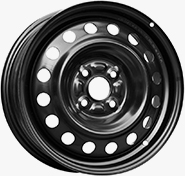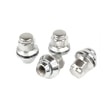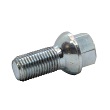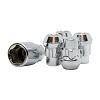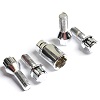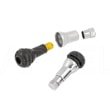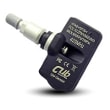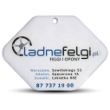How can you tell if the rims are not properly fitted to the car?
Poorly selected rims rank high on the list of common mistakes made during both visual and technical tuning. Their mismatch not only results in a deterioration of aesthetics but also has a real impact on the car's handling. Rims that don't fit the car can protrude beyond the bodywork, rub when turning, or lead to unpleasant steering wheel vibrations. Sometimes the culprit is an insufficiently small rim centering hole, or sometimes the use of identical rims where the manufacturer intended mixed rims.
In this guide, you'll find practical answers to questions about how to tell if rims don't fit, how misalignment can manifest, and how to assess rim parameters before installation. You'll also learn why it's worth using an ET calculator and when there's a risk of noise, tire wear, or suspension geometry issues. If you're planning a rim change and want a perfect fit, explore our custom rim options, which give you complete control over your specifications.
Contents:
- Common symptoms of poorly fitting rims for your car
- ET rims not matching the factory specification – symptoms and risk of poor fitment
- Steering wheel vibrations at higher speeds – the result of missing centering rings or poor balance
- Excessive noise after mounting the rims – a symptom of poor fit with the hub or incorrect assembly
- Problems with wheel balancing despite new tires – a sign of poor quality rims or an inappropriate profile
- Same rims instead of recommended mixed rims – potential risk of incorrect geometry
- Other common symptoms of improper fit of rims to the car
- What consequences can result from poorly selected rims?
- How to choose rims that will definitely fit? About the ET calculator and custom rims
Common symptoms of poorly fitting rims for your car
Even slight deviations from factory specifications can result in unpleasant driving symptoms. Poorly fitted rims often make their presence felt after just a few days of use – first through discomfort, then through component wear. Below are the most common signs that should prompt you to check whether the rims are properly fitted to your specific car model.

ET rims not matching the factory specification – symptoms and risk of poor fitment
The ET parameter, also known as offset, determines the rim's seat depth relative to the hub. This value, expressed in millimeters, indicates how much the rim's center is offset from the wheel's axis of symmetry. A rim ET that's too high or too low causes the wheels to either sit too far inside the wheel arch or protrude excessively. This error not only results in a poor appearance but can also lead to the rim rubbing against the wheel arch, especially at full lock or when the suspension is compressed.
Incorrect ET can also impair the operation of driving assistance systems—such as ABS, ESP, or TPMS sensors—which are calibrated to take into account specific wheelbase and suspension characteristics. Minor deviations are permissible, but poorly matched rims compared to the manufacturer's recommended values carry a real risk of failure or reduced safety system effectiveness.
Many drivers unknowingly install rims with the wrong ET, based solely on appearance. However, the choice should take into account the overall suspension characteristics and the vehicle's intended use – a sporty look often comes at the cost of comfort and stability. It's worth remembering that even if a rim physically fits the hub, it doesn't mean it's properly seated.
Steering wheel vibrations at higher speeds – the result of missing centering rings or poor balance
Common symptoms of poorly selected rims and improper installation include steering wheel vibration, which typically occurs between 100 and 130 km/h (62–80 mph). If a rim's center bore is too small, requiring the use of reduction rings, but these are poorly selected or made of poor quality material, the effect can be counterproductive. The connection between rims and steering wheel vibration is often underestimated, yet improper rim fit is one of the main culprits.
Excessive noise after mounting the rims – a symptom of poor fit with the hub or incorrect assembly
New rims shouldn't produce any additional noise while driving. Noise after mounting, such as a metallic reverberation, buzzing, or humming noise coming from the wheel area, may indicate that the rims are not properly fitted to the vehicle, or more specifically, the hub. This is most often caused by rust, an uneven mounting surface, or minor dimensional differences. Such a mismatch reduces driving comfort and, over time, leads to loosening of the bolts and damage to the mounting hardware.
Problems with wheel balancing despite new tires – a sign of poor quality rims or an inappropriate profile
Sometimes drivers notice wheel balance issues even after installing new tires. If rims have invisible geometric deviations, perhaps due to poor manufacturing quality, balancing them becomes difficult or impossible. Low-quality, poorly fitting rims can cause steering wheel wobble, especially when driving on the highway. An improper rim profile can also lead to tire seating and sealing issues.
Same rims instead of recommended mixed rims – potential risk of incorrect geometry
Some cars – especially sports and premium models – are factory-fitted with different rims at the front and rear (e.g., wider rear wheels). Using identical rims contrary to the manufacturer's recommendations can lead to imbalances in weight distribution and suspension performance. Symptoms include reduced rear axle traction, abnormal tire wear, and noticeable differences in handling at higher speeds. Rims that are too large on each wheel can also lead to inaccurate speedometer readings and excessive tire wear due to uneven weight distribution.
Other common symptoms of improper fit of rims to the car
Some symptoms of improperly selected rims are subtle, but over time they can significantly reduce driving comfort and impact safety. It's worth being vigilant if, after installing new rims, you notice:
- Rims that protrude beyond the vehicle's outline – even a slight protrusion can result in water and mud splashing onto the bodywork and damaging the wheel arches. In many cases, this can also result in failing the MOT or receiving a fine.
- Rims rubbing against the wheel arch – especially at full lock or when driving with a heavy load. The problem may be due to incorrect rim width or too low an ET.
- Incorrect wheel bolt spacing – if the bolt holes don't align with the hub, attempting to install the wheel will result in resistance when tightening, and the wheel itself may "sit" crooked. This is not only dangerous but also harmful to the threads and hub.
- Unusual noises or vibrations while driving – sometimes the symptoms don't appear immediately, but after a few days of use. This may indicate a poor fit between the rim and hub or mechanical damage to the rim during installation.
Any of these symptoms suggests that the rims are not properly fitted to the car – even if they appear fine at first glance. Ignoring them can result in discomfort and accelerated wear of suspension and steering components.
| Symptoms of poorly fitting rims | Possible cause | Additional notes |
|---|---|---|
| Steering wheel vibrations at speeds of 100–130 km/h | Centering rings missing or poorly fitted | It may also be due to low-quality rims or balancing errors. |
| Noise from the wheel area after installing new rims | Bad contact with the hub, uneven surface, rust | Often accompanied by a metallic reverberation or humming sound |
| Wheel rims rubbing against the wheel arches | Too small ET or too large rim width | Particularly visible when turning or under heavy load |
| Rims sticking out beyond the outline of the car | Too low ET or use of spacers | May result in a fine or problems with technical inspection |
| Balance problems despite new tires | Rims of poor quality or with geometric deviation | It manifests itself by steering wheel shaking, especially at high speeds. |
| Unusual tire wear (e.g., tread "sawing") | Incorrect geometry setting due to a poorly selected rim | Often confused with the convergence problem |
| ABS/ESP malfunction | Rims with a different ET or weight than the factory ones | Safety systems are calibrated to specific suspension parameters |
| Rims that "sit crooked" or are difficult to bolt on | Incorrect bolt spacing or assembly errors | May damage threads and lead to dangerous looseness |
What consequences can result from poorly selected rims?
In short, poorly selected rims can result in technical, financial, and even legal problems. Some effects only become apparent after weeks or months of intensive use, with one of the most underestimated consequences being irregular tire wear . When a rim changes its suspension geometry or sets the tire at an incorrect angle, the so-called "sawing" effect occurs, which is uneven wear on one edge. The tire can lose grip in corners, and its durability is drastically reduced – this effect is often mistaken for an alignment error, although in reality, the problem lies with the incorrect rims.
Another risk is increased stress on bearings and suspension components. Furthermore, rims that are too small can restrict brake disc ventilation and cause them to overheat over long periods of driving. When a rim has too small or too large an ET, the wheel's center of gravity shifts relative to the suspension axis. This leads to accelerated wear of bearings, shock absorbers, and even control arm pivots. Braking system problems are also a common consequence. Ill-fitting rims can cause the rim to collide with the brake caliper—even if they theoretically fit the vehicle. This manifests itself through a disturbing noise while driving—in extreme cases, this can lead to brake overheating or wheel lockup.
It's also worth mentioning the disruption of safety systems such as ABS and ESP. Rims of the wrong size and weight can affect the operation of wheel speed sensors. Inaccurate readings can delay the system's response and directly impact braking distances and driving stability in emergency situations. A separate issue is the difficulty of periodic technical inspections and roadside inspections. Ill-fitting rims that protrude beyond the vehicle's outline, have a non-approved diameter, or lack the appropriate markings can result in failing the technical inspection. In some countries (including Poland, in the context of roadside inspections), there's a risk of receiving a fine and having the vehicle's registration document confiscated. This is particularly true for drivers who install rims with non-standard ET or use unapproved spacers.
| The effects of poorly selected rims | Example effects | Description and consequences |
|---|---|---|
| Technical | Rubbing against the wheel arch, overheating brakes | It may lead to damage to suspension components and shorten the life of parts. |
| Comfort and safety | Steering wheel vibrations, noise, reduced traction | Reduces driving comfort, increases the risk of accidents, affects the operation of ABS/ESP |
| Operational | Uneven tire wear, difficulty balancing | It shortens the life of tires, worsens the vehicle's handling and increases operating costs. |
| Legal and homologation | Tickets, failing inspections, seizure of ID cards | Failure to comply with regulations may result in financial and formal penalties. |
| Economical | More frequent repairs, replacement of rims or suspension | Higher long-term costs, the need for corrections or the purchase of new rims |
How to choose rims that will definitely fit? About the ET calculator and custom rims
Choosing rims doesn't end with checking the diameter and width. To avoid common mistakes that lead to improper fit, it's worth considering several key parameters – such as bolt pattern, center bore diameter, embedment depth (ET), and load capacity. Even minor differences can translate into issues with handling, tire wear, or suspension stability. Fortunately, today's drivers have tools at their disposal that make the selection process much easier.
One of the most practical solutions is the wheel offset calculator – an intuitive online tool that allows you to quickly check how the position of a new wheel will change compared to your current one. Simply enter the parameters of the old and planned wheel (diameter, width, and ET), and the calculator will indicate how many millimeters the wheel will move inward or outward. This is crucial – a difference greater than 5 mm can disrupt the suspension or cause the wheel to rub against the wheel arch.
It is worth using the ET calculator especially when:
- you plan to change the width or diameter of the rims;
- you wonder whether the new model will "hide" in the wheel arch or stick out;
- you want to avoid installing spacers without approval;
- you are comparing OEM rims with replacements.
A properly selected ET allows you to maintain the factory suspension geometry and avoid situations where the rims protrude beyond the vehicle's outline or cause vibrations. The calculator allows you to predict not only the visual effect but also the impact on the vehicle's handling.
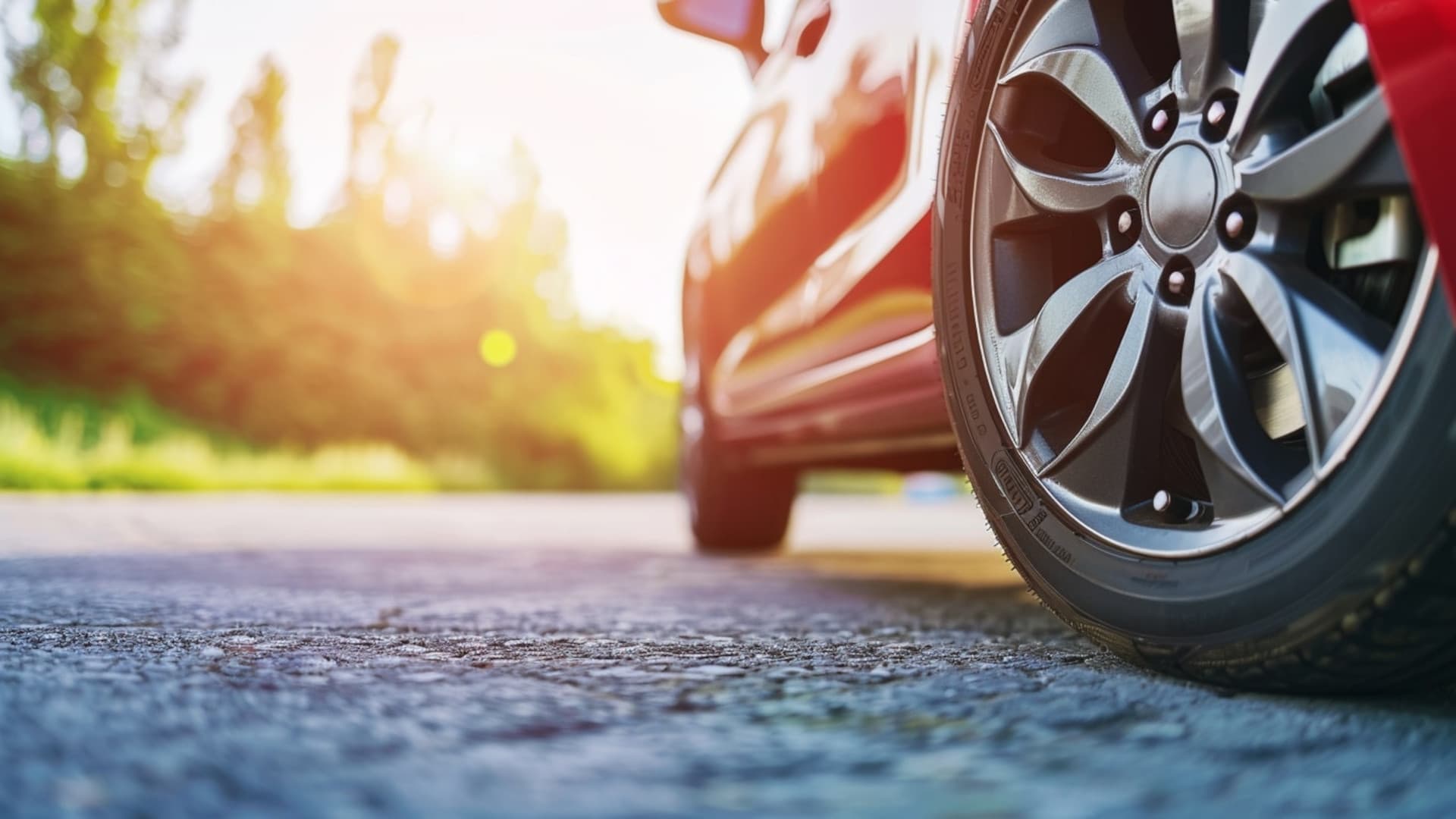
For drivers seeking a perfect fit – both technically and aesthetically – custom forged wheels are the perfect solution. Their greatest advantage is the ability to be fully personalized. You can choose:
- accurate ET for the front and rear of the car (ideal for cars with mixed rim recommendations);
- width and diameter adapted to specific tires;
- design, color and finish that match the style of your car;
- bolt spacing, load capacity and center bore in accordance with the vehicle manufacturer's specifications.
Forged wheels are lighter than classic aluminum wheels, yet more durable. Their production, based on machining from a single piece of metal, ensures greater durability and resistance to deformation. This is especially important for owners of high-powered cars, sports cars, but also for those who simply expect a perfect fit without compromise.
Instead of risking ill-fitting rims, forged rims are a good choice when you have unusual suspension or body parameters. They're also ideal when you want a precise fit for a specific car style and want to combine maximum durability with a unique look. Furthermore, aluminum rims available from manufacturers are often mass-produced and fit many models, but they'll never match the precision of forged rims designed specifically for you.
Choosing rims may seem like a simple task at first glance, but in practice, even small differences in parameters can make a significant difference. Therefore, before purchasing, it's worth spending a few minutes analyzing them – using an ET calculator and considering whether custom-made rims would be a better option for you, ensuring a perfect look and full compatibility with your car.
Recommended

4x rims 20 for LEXUS GS IS NX RX KIA Ceed Sportage HYUNDAI Tucson Vossen CVT - B1059 (B1058)

4x rims 20 5x112 for BMW 7 G11 G70 i7 3 G20 G21 4 i4 G22 G23 G26 5 i5 G30 G31 - B5181

4x rims 19 for HYUNDAI Kauai Ioniq 5 6 Tucson Elantra Santa Fe I30 I40 IX35 - A5901


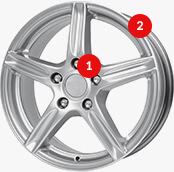

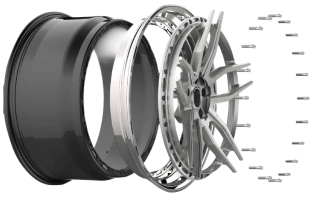
 Modern design
Modern design Perfect fit
Perfect fit High durability
High durability Free shipping within 24 hours
Free shipping within 24 hours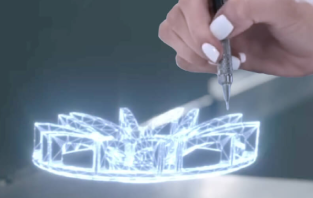
 Individual project
Individual project Dedicated caregiver
Dedicated caregiver